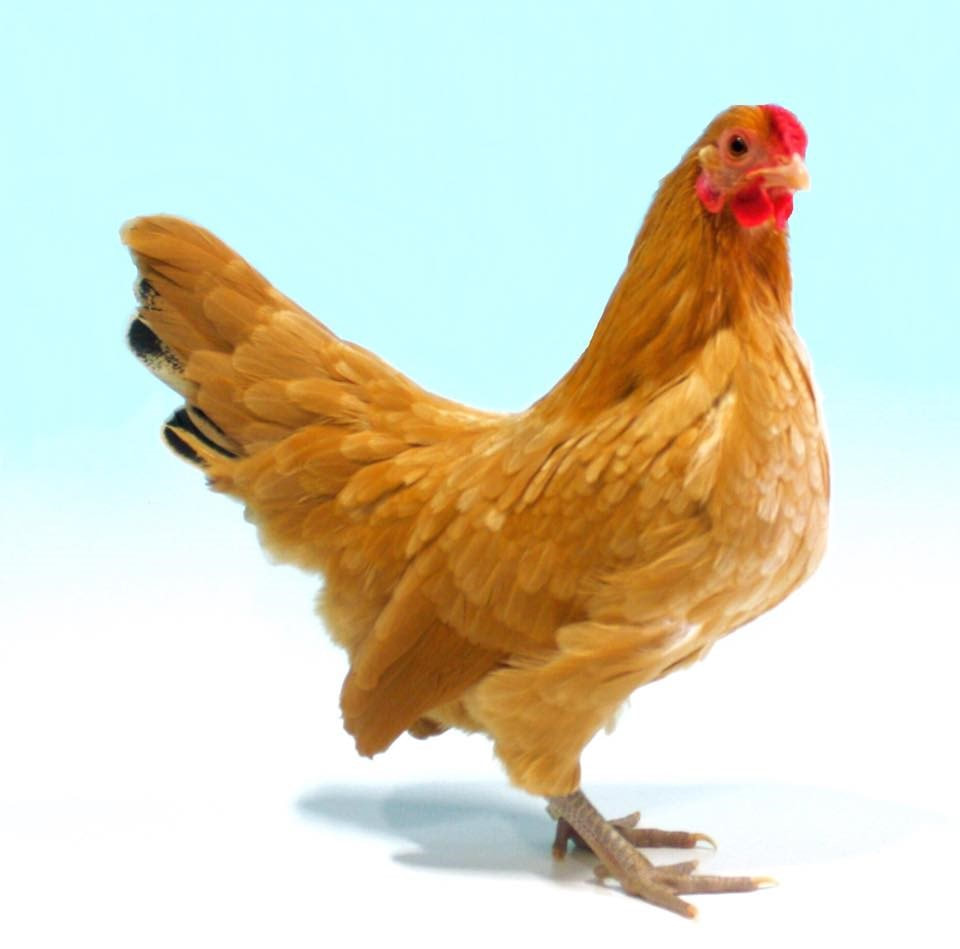Nankins, or common yellow bantams, were among the first varieties of bantams introduced into this country. The variety came originally from Java and some parts of India. Once, they were the most widespread of all bantams and are believed to be the progenitors of nearly all buff bantam varieties. The name is thought to have been given from the resemblance of the colour to nankeen cloth. Nankins are excellent layers and the most tameable and engaging of breeds.
General characteristics: male
Carriage: Jaunty and active, with a proud bearing.
Type: Body small and neat, the breast carried well up and forward. Back short and sloping to the tail. Wings large, closely folded and carried very low, almost down to the ground. Tail large and well spread with long well-curved sickles. The whole tail carried high but not squirrel, well furnished with flowing side hangers and coverts.
Head: Small and fine. Beak rather fine and slightly curved. Eyes large and bright. Comb single or rose. The single should be neat, bearing three to six fine spikes. It should be straight and upright and in proportion with the head, carried well away from the head, a flyaway comb being characteristic. The rosecomb should be small and close fitting, finely worked, with a small leader curved gracefully upward. Face smooth, earlobes very small, wattles small and well rounded, fine, smooth and free from wrinkles.
Neck: Medium long, well-curved and bearing long and abundant hackle.
Legs and feet: Legs short, thighs set well apart, shanks rather short, rounded, and fine, free from feathers. Toes four, rather small, straight and well spread.
Female
With the exception of the carriage, which is lower and less arrogant and with the tail carried well spread but slightly lower, the general characteristics are similar to those of the male, allowing for the natural sexual differences.
General characteristics: male
Carriage: Jaunty and active, with a proud bearing.
Type: Body small and neat, the breast carried well up and forward. Back short and sloping to the tail. Wings large, closely folded and carried very low, almost down to the ground. Tail large and well spread with long well-curved sickles. The whole tail carried high but not squirrel, well furnished with flowing side hangers and coverts.
Head: Small and fine. Beak rather fine and slightly curved. Eyes large and bright. Comb single or rose. The single should be neat, bearing three to six fine spikes. It should be straight and upright and in proportion with the head, carried well away from the head, a flyaway comb being characteristic. The rosecomb should be small and close fitting, finely worked, with a small leader curved gracefully upward. Face smooth, earlobes very small, wattles small and well rounded, fine, smooth and free from wrinkles.
Neck: Medium long, well-curved and bearing long and abundant hackle.
Legs and feet: Legs short, thighs set well apart, shanks rather short, rounded, and fine, free from feathers. Toes four, rather small, straight and well spread.
Female
With the exception of the carriage, which is lower and less arrogant and with the tail carried well spread but slightly lower, the general characteristics are similar to those of the male, allowing for the natural sexual differences.
Please contact the breed registrar for more information - [email protected]


